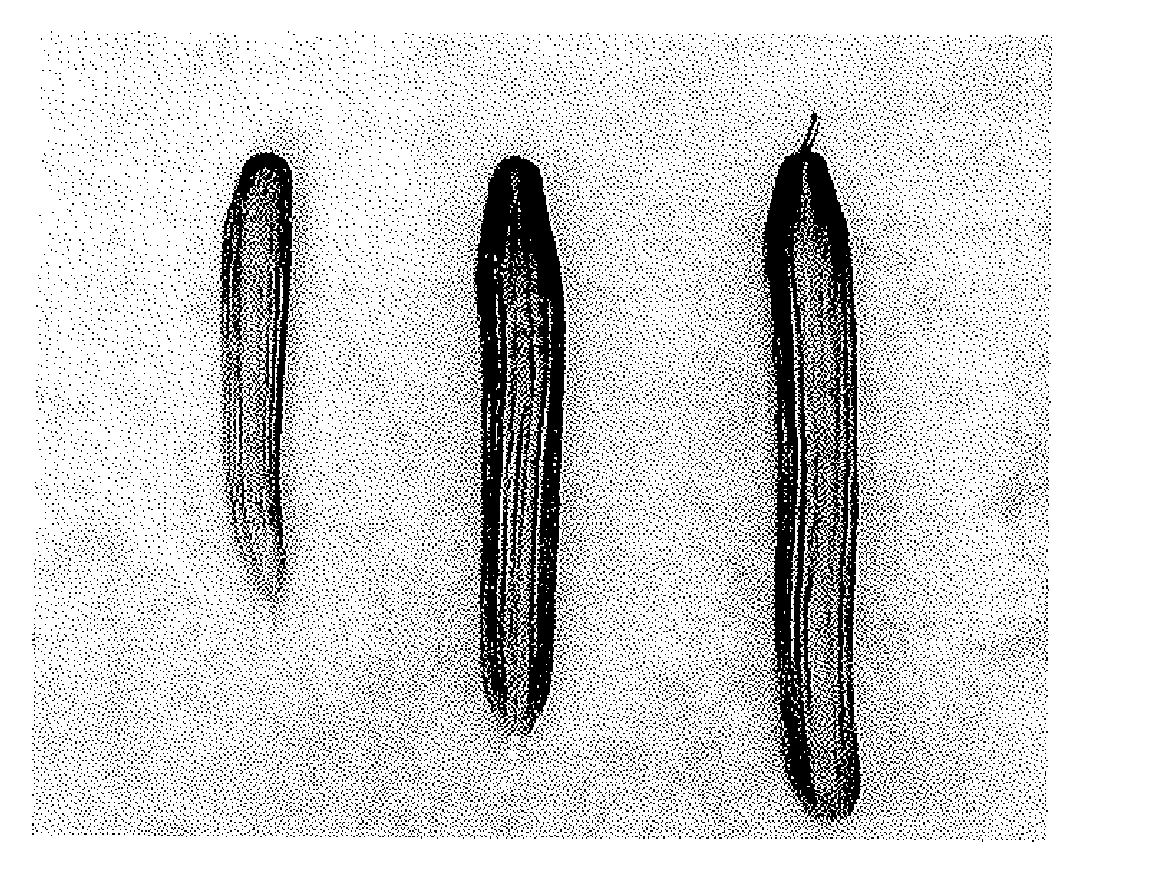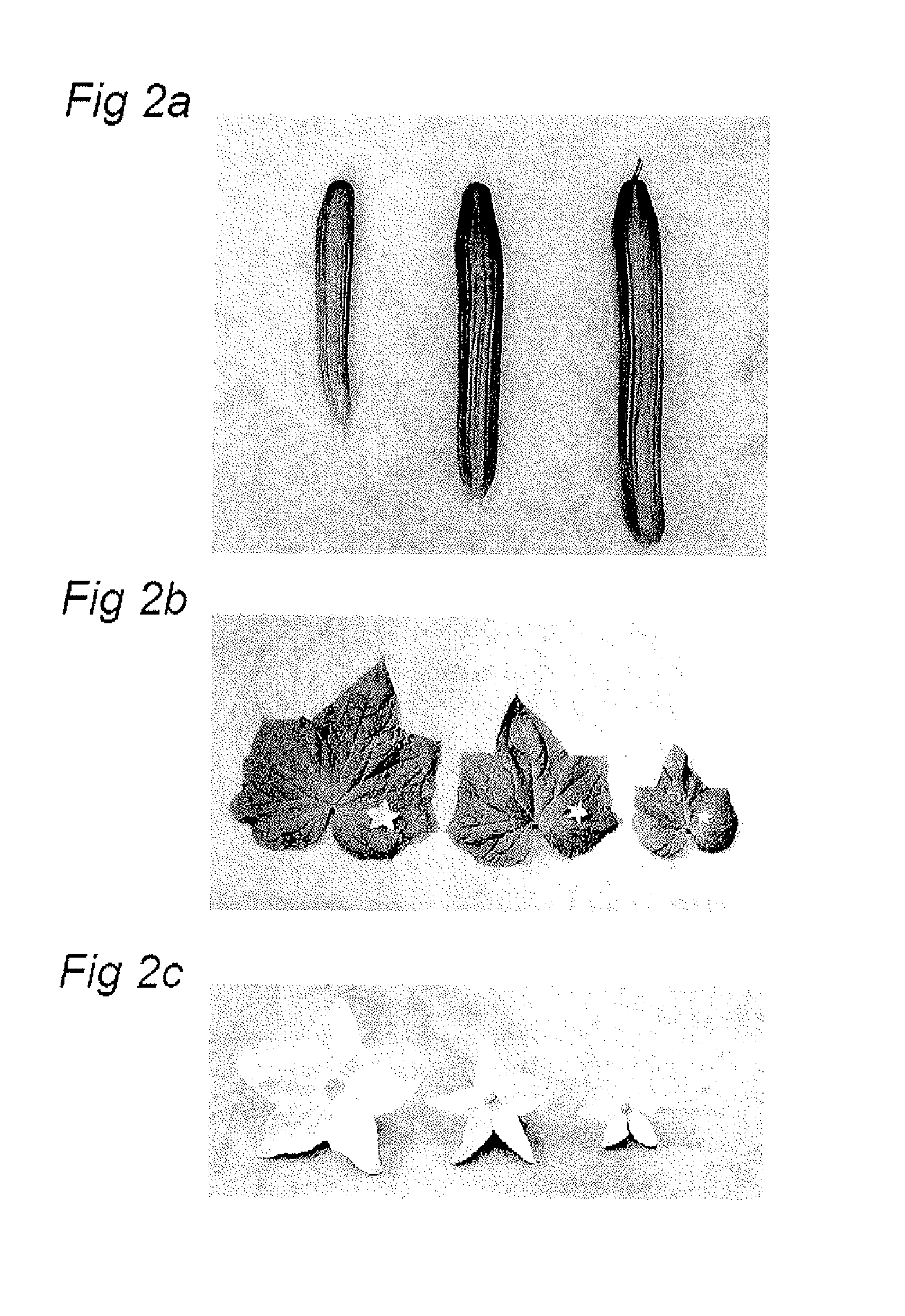New cucumber plants with a compact growing habit
a new type of cucumber technology, applied in the field of cucumber genome modification, can solve the problems of low phenotype, low yield, and low phenotype of cucumber cultivation, and achieve the effects of less tuberculation, less “bumping” and slow growth ra
- Summary
- Abstract
- Description
- Claims
- Application Information
AI Technical Summary
Benefits of technology
Problems solved by technology
Method used
Image
Examples
example 1
Phenotype Analysis of the Compact Plants
[0121]A more compact plant with a deviant phenotype was unexpectedly found in an F1 hybrid population when cultivating the long Dutch cucumber in the Netherlands. This plant was called the “4001 type”, and the locus responsible for it was called the “4001 locus”. It was established that, in comparison with other long cucumber plants like those of the Korinda variety, for example, the growth of the compact plants was moderate, and its main stem grew slowly, mainly because its internodes were shorter. The leaves of this more compact plant were noticeably smaller and darker than those of the usual long cucumber variety. The foliage of the more compact plants was more horizontal, and the leaves were less bumpy, i.e. they were flatter. The more compact plants had a noticeably more open plant structure than the usual long cucumber variety. Its fruits were shorter and weighed less than on plants of the long cucumber type.
[0122]Analysis of a populatio...
example 2
Characterization Based on DNA Markers
[0174]The location of the compact gene in the cucumber genome can also be demonstrated with the aid of molecular markers.
[0175]The compact gene was mapped by means of an AFLP analysis (see P. Vos et al., 1995).
[0176]The much-used restriction enzyme combination EcoRI / MseI was employed for the AFLP analysis. The letter E of EcoRI and the letter M of MseI are given in the name of the marker as is general practice in the literature. The code that comes after the letter E or M corresponds to the selective nucleotides on the 3′ terminal site of the EcoRI and MseI primers, as is similarly standard practice (see the available list with AFLP codes on the websites
www.keygene.com / keygene / pdf / KF%20Primer%20enzyme%20combinations.pdfand http: / / wheat.pw.usda.gov / ggpages / keygeneAFLPs.html).
[0177]For the restriction enzyme EcoRI (E), for examples, the selective nucleotides at the 3′ end (−3) and the corresponding primer codes are as follows:
Primers + 0¦E00Primers...
PUM
| Property | Measurement | Unit |
|---|---|---|
| length | aaaaa | aaaaa |
| length | aaaaa | aaaaa |
| height | aaaaa | aaaaa |
Abstract
Description
Claims
Application Information
 Login to View More
Login to View More - R&D
- Intellectual Property
- Life Sciences
- Materials
- Tech Scout
- Unparalleled Data Quality
- Higher Quality Content
- 60% Fewer Hallucinations
Browse by: Latest US Patents, China's latest patents, Technical Efficacy Thesaurus, Application Domain, Technology Topic, Popular Technical Reports.
© 2025 PatSnap. All rights reserved.Legal|Privacy policy|Modern Slavery Act Transparency Statement|Sitemap|About US| Contact US: help@patsnap.com



